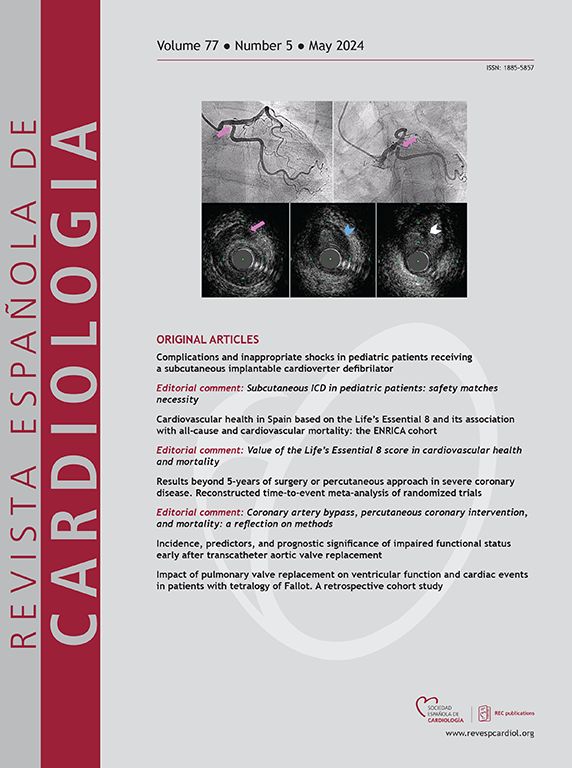西班牙起搏器登记处。西班牙心脏病学会心律协会第二十一期正式报告(2023 年)。
IF 5.9
2区 医学
Q2 Medicine
引用次数: 0
摘要
导言:本文介绍了 2023 年西班牙心脏起搏系统的植入数据。方法:该登记册基于各中心在植入设备后通过国家登记册在线平台 Cardiodispositivos 向心脏节律协会记录平台提供的信息。其他信息来源包括:a)来自制造和营销行业的数据传输;b)欧洲起搏器患者卡;c)植入中心提交的本地数据库。共报告了 24 343 例设备植入(比 2022 年增加 48.1%),而欧洲医疗供应商协会联合会(Eucomed)报告的植入数量为 45 120 例。其中,1646 台为心脏再同步治疗起搏器。增幅最大的设备是无引线起搏器,共植入 963 台,比 2022 年增长了 18.1%。最常见的适应症是房室传导阻滞,其次是伴有缓慢心室反应的房性快速性心律失常,这还是第一次。纳入远程监测的设备数量也有所增加(心脏再同步治疗除颤器,71%;心脏再同步治疗起搏器,63%;传统起搏器,28%),但增幅不大。设备植入报告增加了 48.1%,无导联起搏器植入增加了 18.1%。与前几年相比,远程监测也有小幅增长。本文章由计算机程序翻译,如有差异,请以英文原文为准。
Registro español de marcapasos. XXI informe oficial de la Asociación del Ritmo Cardiaco de la Sociedad Española de Cardiología (2023)
Introduction
Data on implants of cardiac pacing systems in Spain in 2023 are presented.
Methods
The registry is based on the information provided by centers to the recording platform of the Heart Rhythm Association after device implantations, through Cardiodispositivos, the online platform of the National Registry. Other information sources include: a) data transfers from the manufacturing and marketing industry; b) the European pacemaker patient card; and c) local databases submitted by the implanting centers.
Results
In 2023, 112 hospitals participated in the registry (30 more than in 2022). A total of 24 343 device implantations were reported (48.1% more than in 2022) compared with 45 120 reported by Eucomed (European Confederation of Medical Suppliers Associations). Of these, 1646 were cardiac resynchronization therapy pacemakers. The devices showing the largest increases were leadless pacemakers, with 963 devices implanted, representing an 18.1% increase over 2022. The most frequent indication was atrioventricular block followed, for the first time, by atrial tachyarrhythmia with slow ventricular response. The number of devices included in remote monitoring also increased (cardiac resynchronization therapy defibrillators, 71%; cardiac resynchronization therapy pacemakers, 63%; and conventional pacemakers, 28%), although more moderately.
Conclusions
In 2023, there was an increase in the number of institutions participating in the registry. The reporting of device implantations rose by 48.1%, and the implantation of leadless pacemakers grew by 18.1%. Remote monitoring also experienced modest growth compared with previous years.
求助全文
通过发布文献求助,成功后即可免费获取论文全文。
去求助
来源期刊

Revista espanola de cardiologia
医学-心血管系统
CiteScore
4.20
自引率
13.60%
发文量
257
审稿时长
28 days
期刊介绍:
Revista Española de Cardiología, Revista bilingüe científica internacional, dedicada a las enfermedades cardiovasculares, es la publicación oficial de la Sociedad Española de Cardiología.
 求助内容:
求助内容: 应助结果提醒方式:
应助结果提醒方式:


